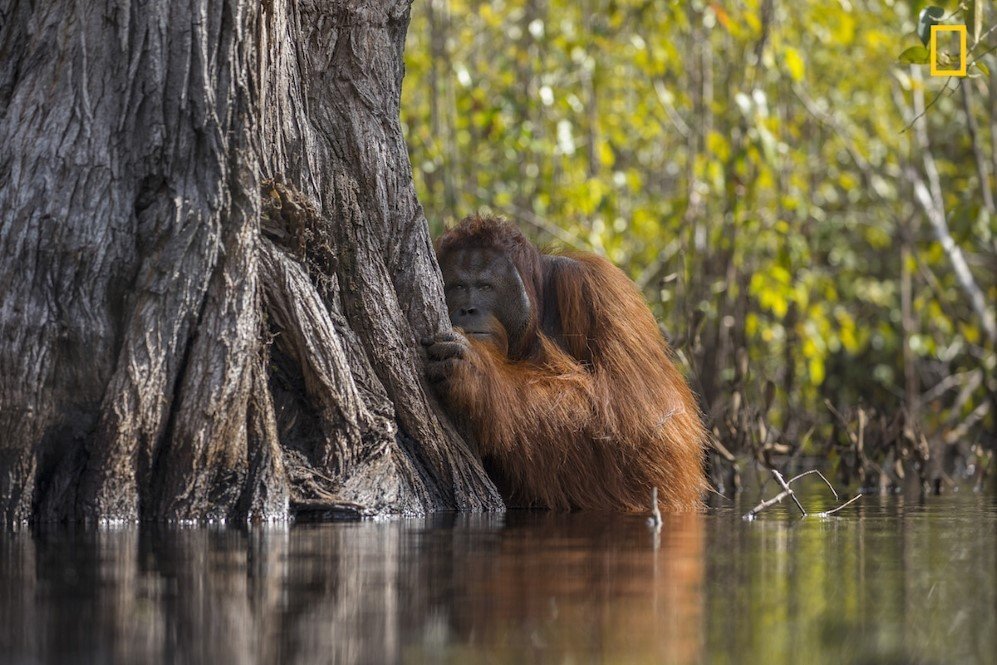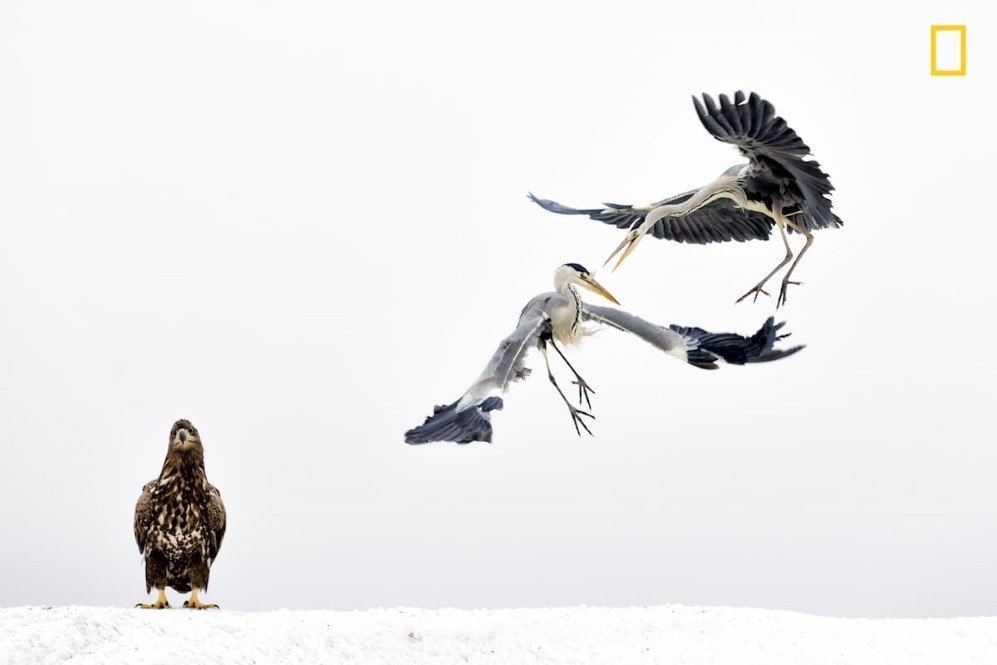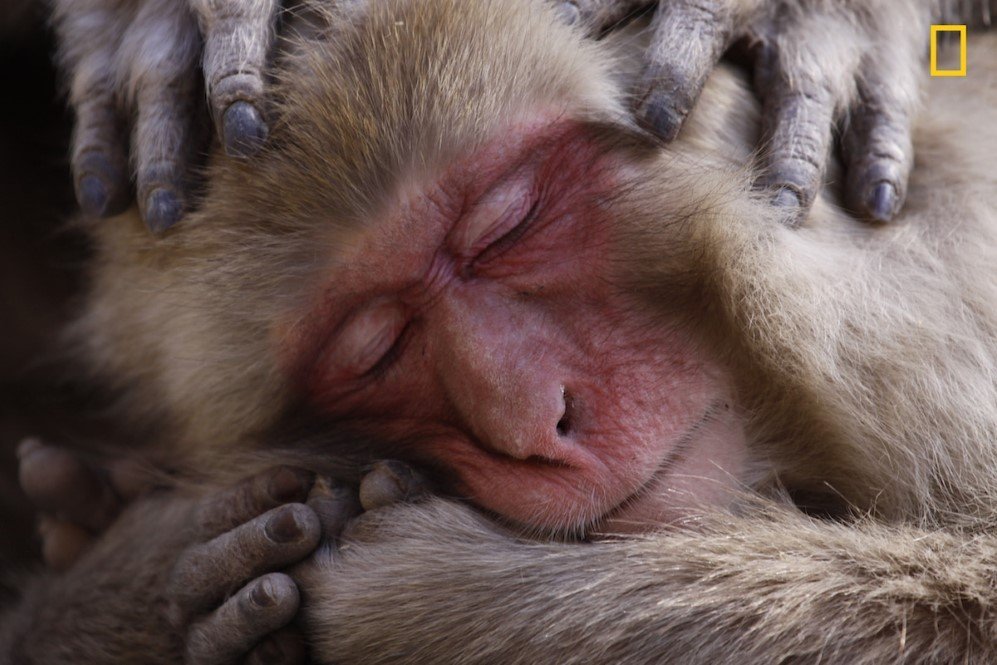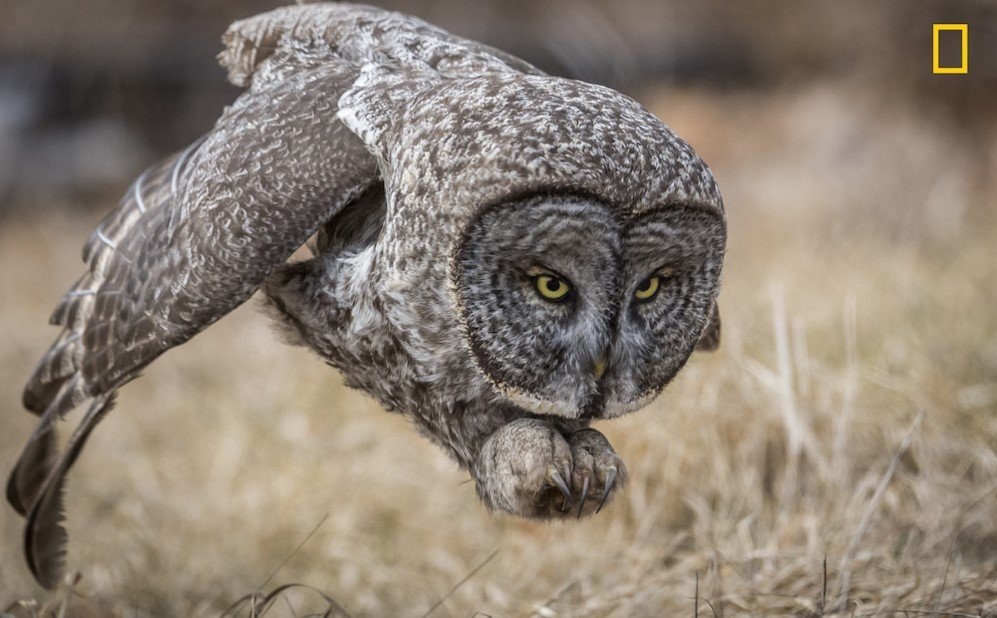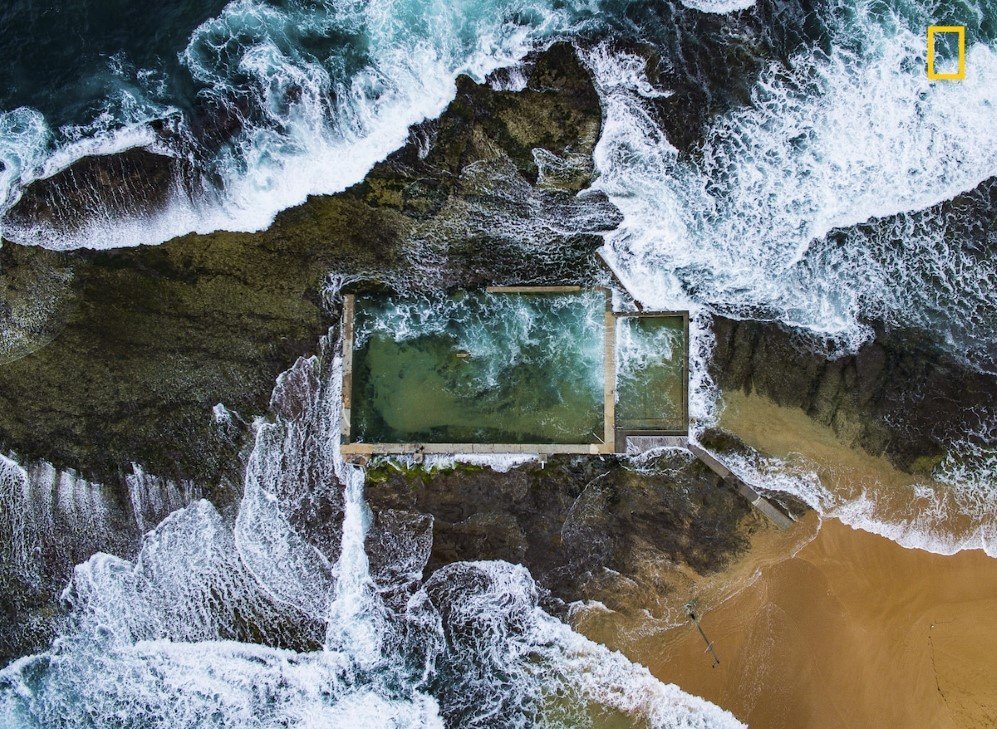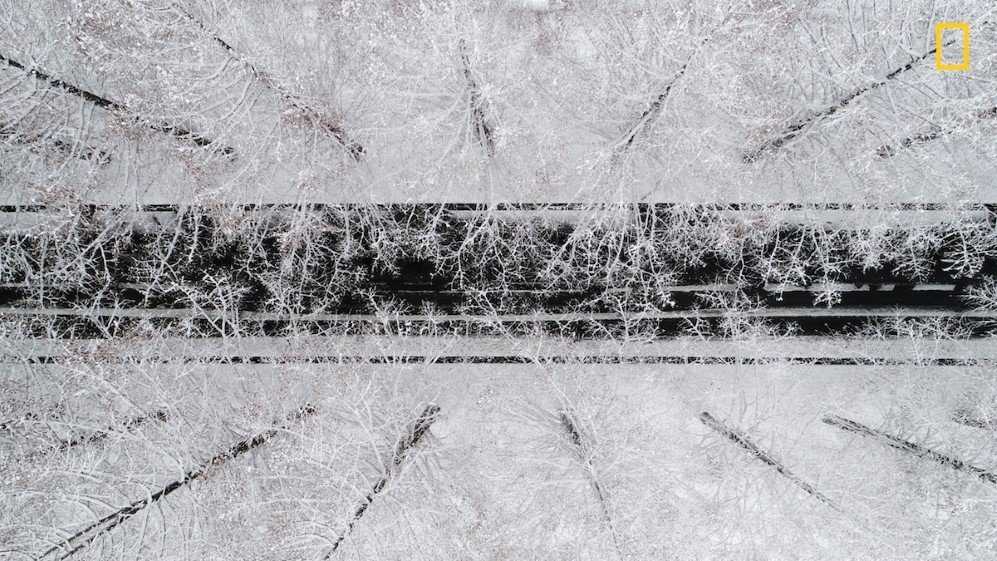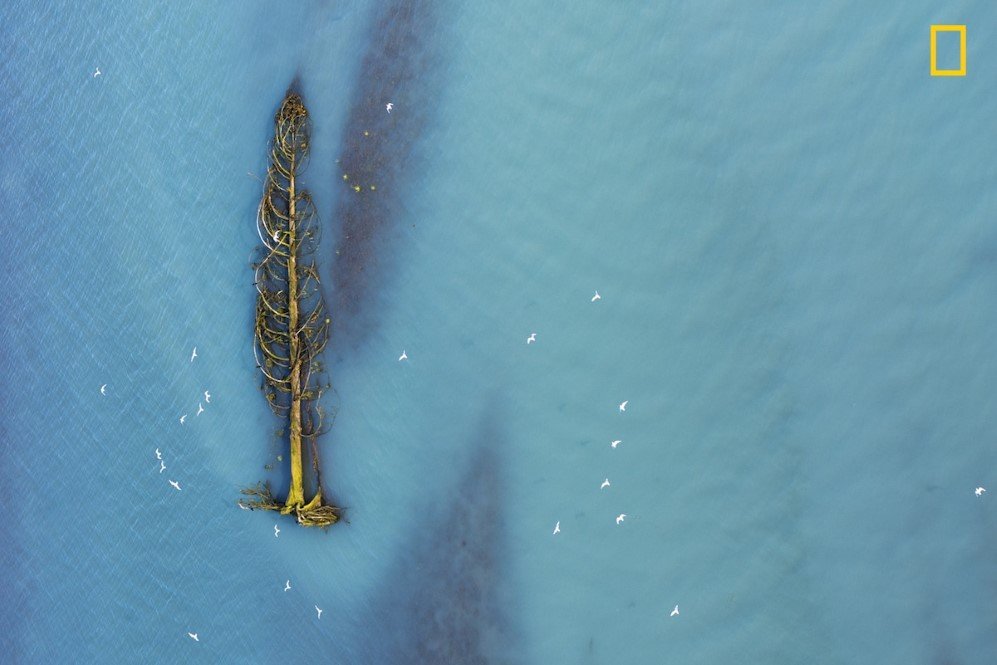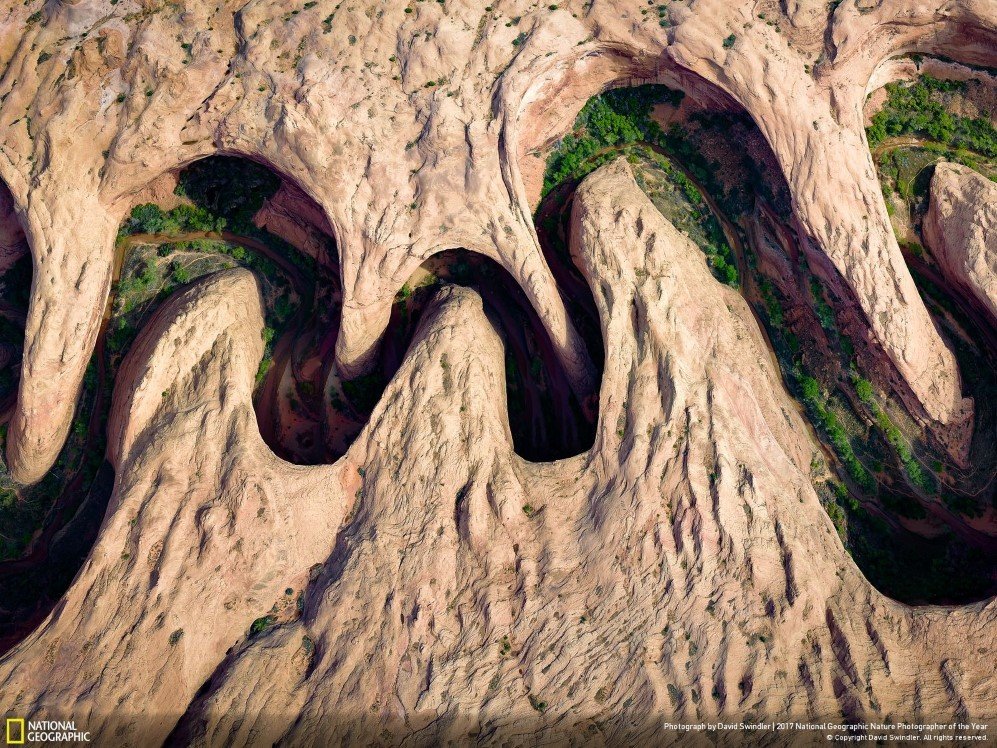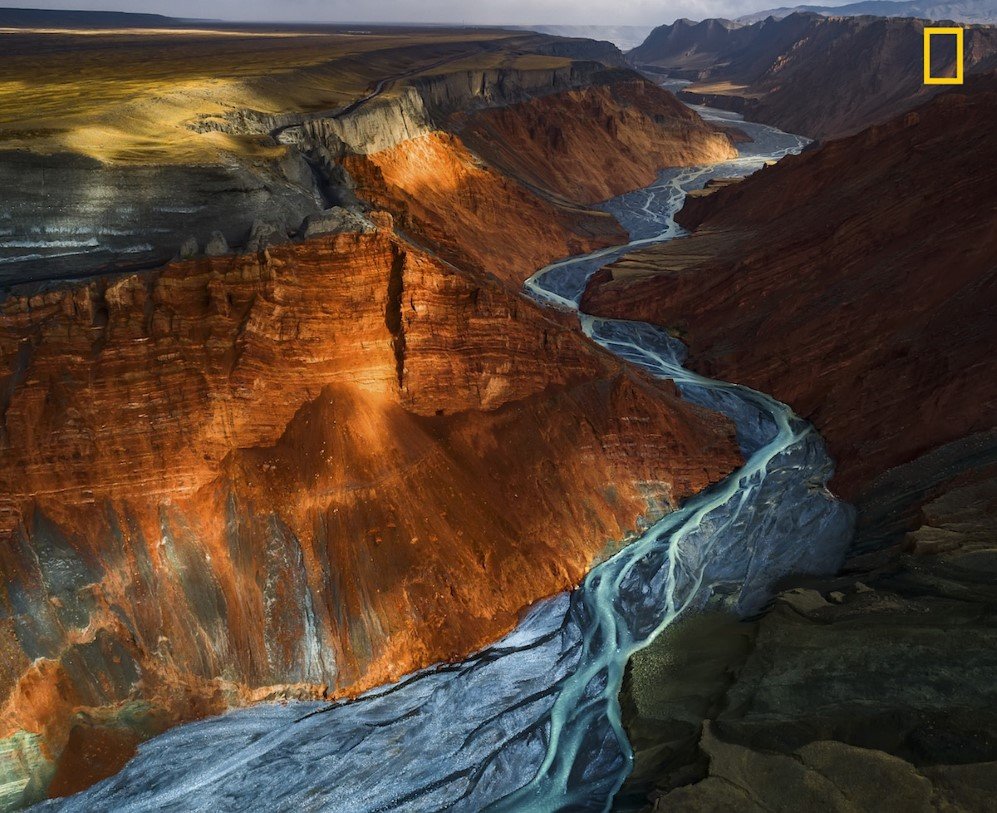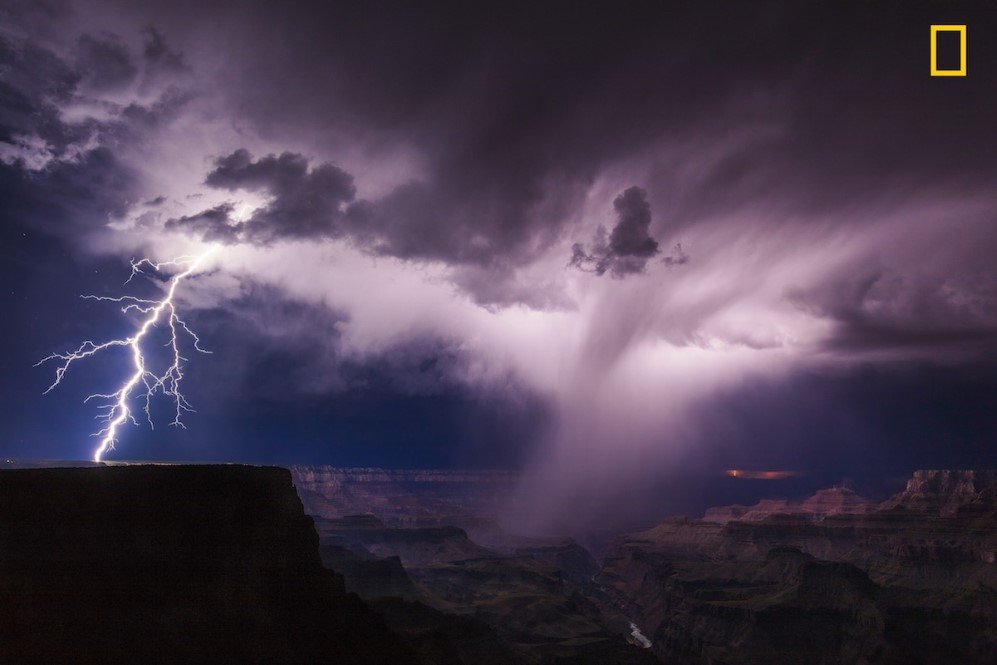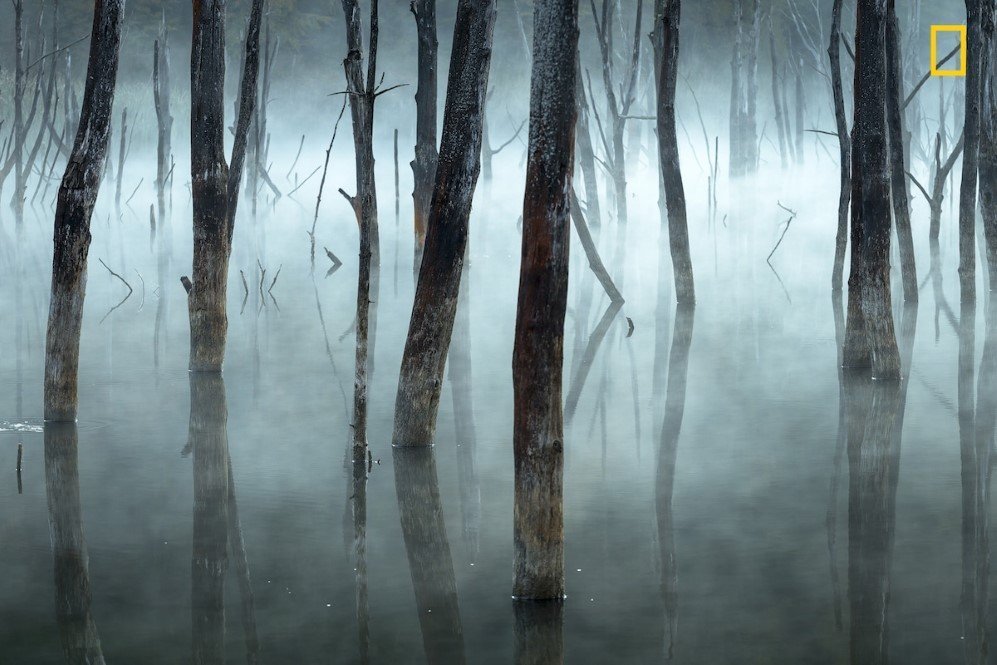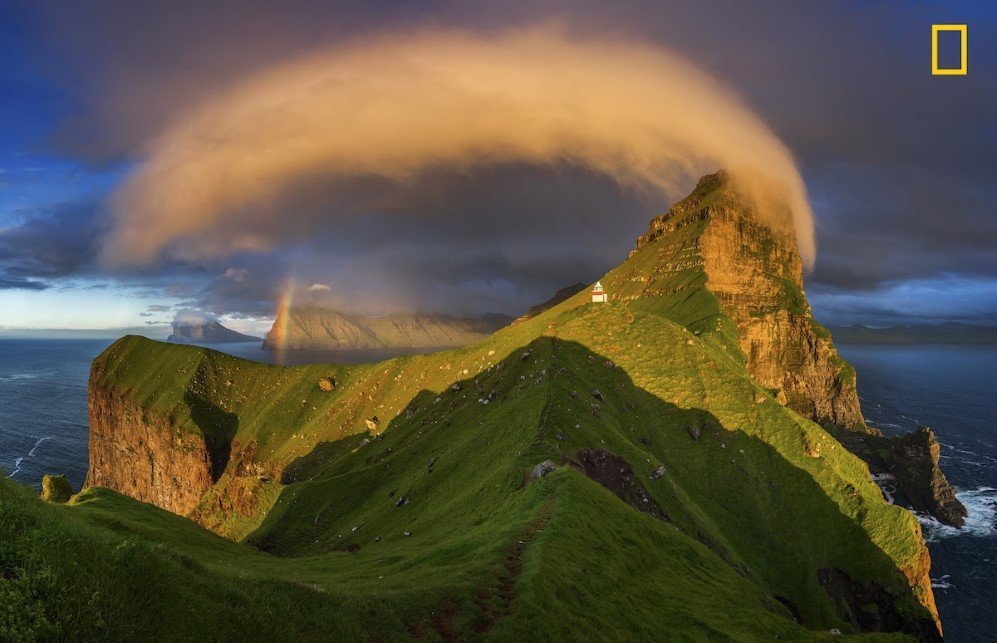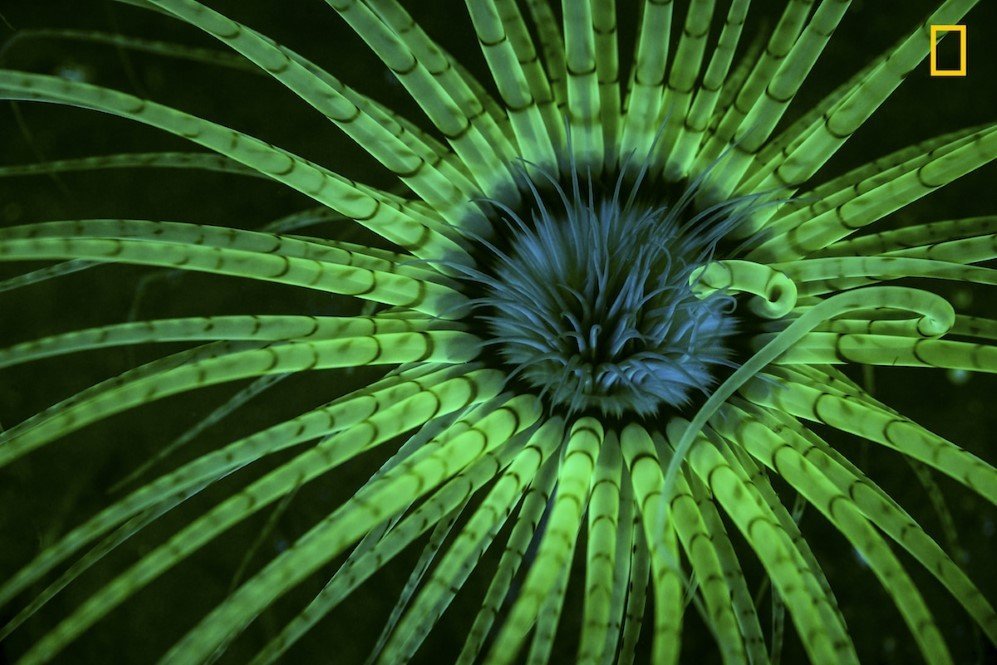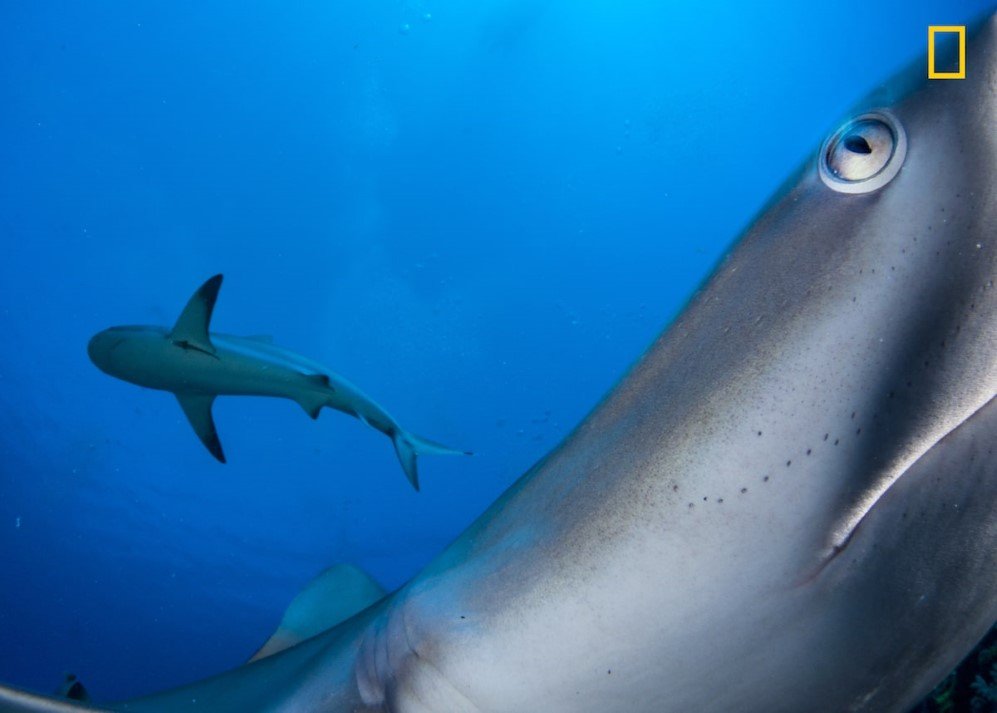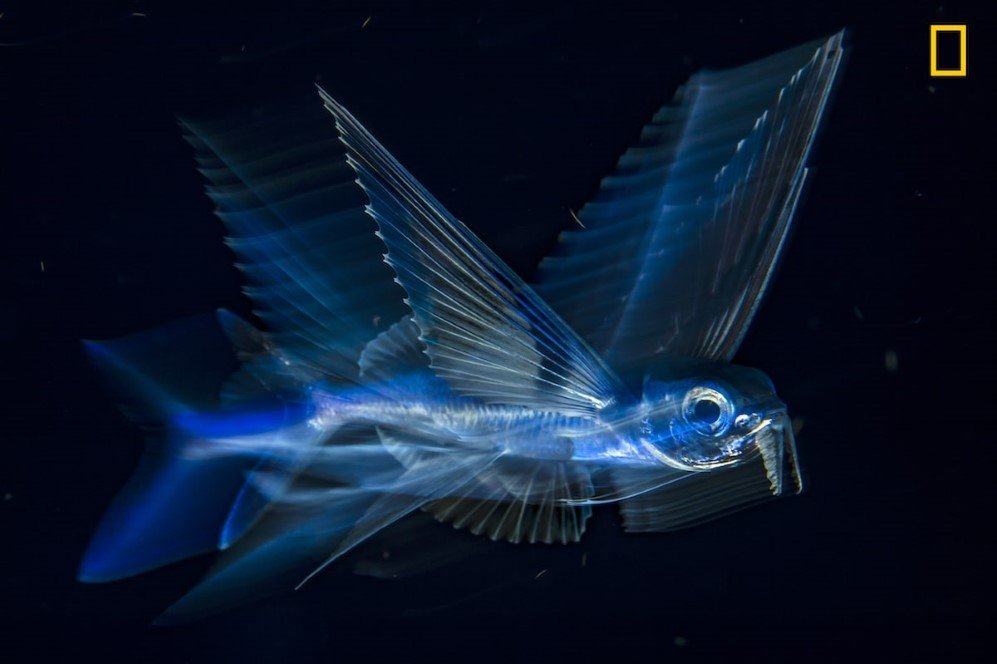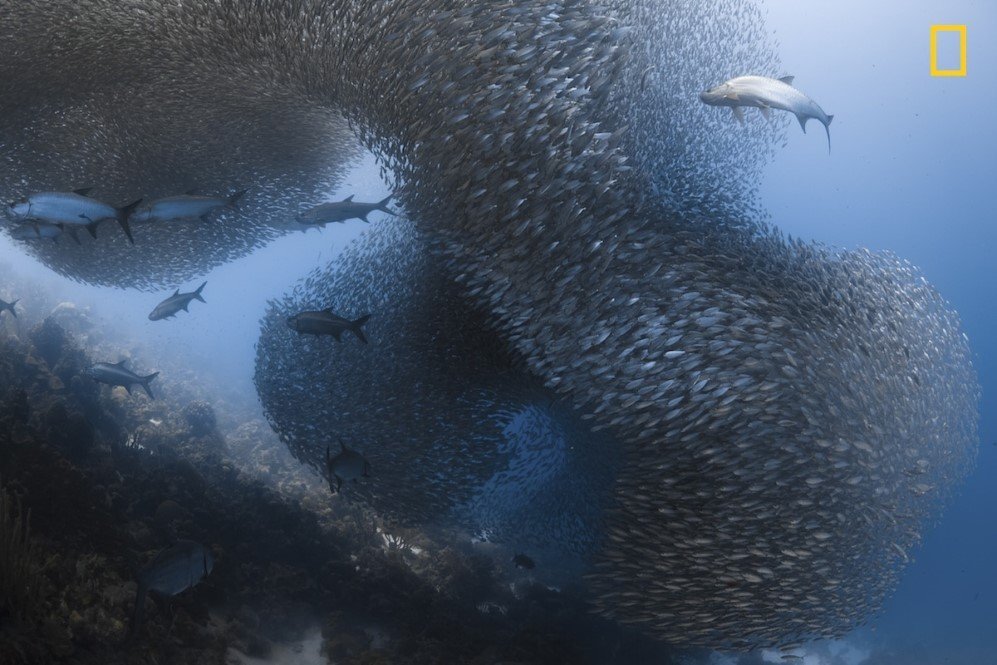Winning Photographs of The 2017 National Geographic Nature Photographer of the Year Contest Will Leave You In Awe!
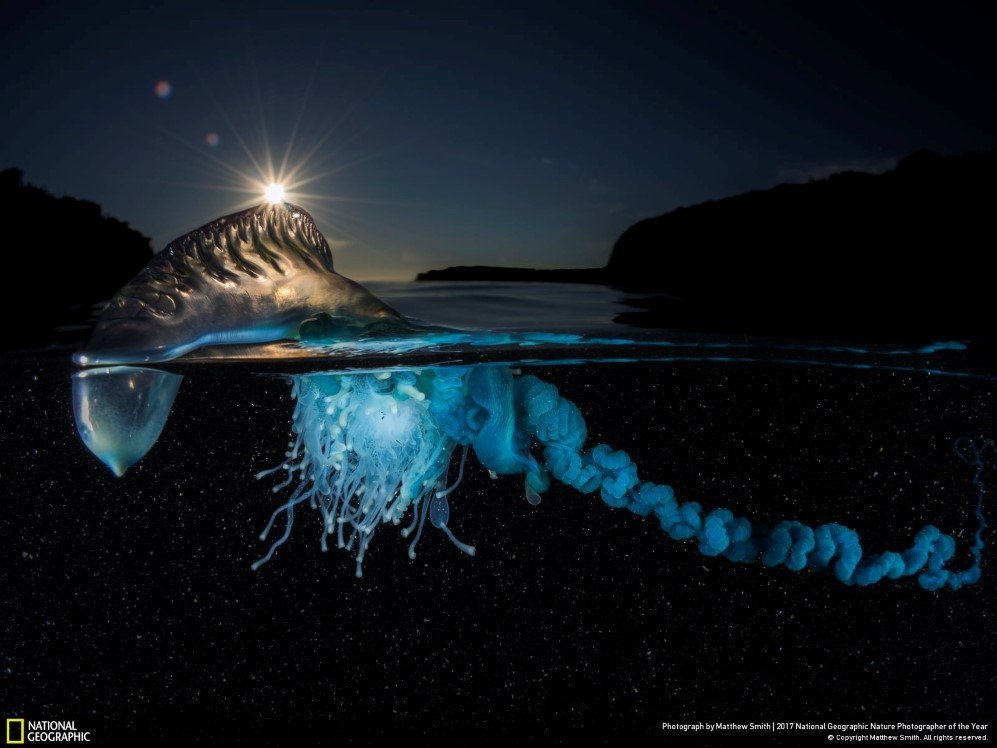
Following its lifelong tradition of giving a solid platform to the talented photographers, National Geographic once again conducted its annual National Geographic Nature Photographer of the Year Contest and this time, over 11,000 entries were up for grabbing the top prizes.
The prize for this year was $10,000 but what is more worthy of being mentioned is that the prize included featuring of winning photograph on the upcoming issue of National Geographic. Keep scrolling down to see this year’s photographs that left even the most popular photographers at Nat Geo completely amazed.
Contents
1. Face to face in a river in Borneo
Grand prize winner, 1st place, Wildlife
Photo & caption credits: Jayaprakash Joghee Bojan, 2017 National Geographic Nature Photographer of the Year
While looking for wild orangutans in Tanjung Puting National Park, Indonesia, we witnessed the amazing sight of this huge male crossing a river despite the fact there were crocodiles in the river. Rapid palm oil farming has depleted their habitat and when pushed to the edge, these intelligent creatures have learned to adapt to the changing landscape, This is proof considering orangutans hate water and never venture into a river. I got into the 5-feet deep river to get this perspective.
2. Mother’s love
2nd place, Wildlife
Photo & caption credits: Alejandro Prieto, 2017 National Geographic Nature Photographer of the Year.
An adult Caribbean pink flamingo feeds a chick in Yucatán, Mexico. Both parents alternate feeding chicks, at first with a liquid baby food called crop milk, and then with regurgitated food.
3. White Fighters
3rd place, Wildlife
Photo & caption credits: Bence Mate, 2017 National Geographic Nature Photographer of the Year.
In winter, when all waters freeze, water birds gather around the holes on the lake. Some of them would catch fish, while the rest are determined to steal fish from the others or even catch water birds. White-tailed eagles are such birds, always looking for an opportunity to steal, and in the meantime, they manage to confront and fight everyone, even their conspecifics.
4. Macaque Maintenance
Honorable mention, Wildlife
Photo & caption credits: Lance McMillan, 2017 National Geographic Nature Photographer of the Year
A macaque being groomed at the Jigokudani snow monkey park in Japan. The Jigokudani snow monkey park has become a major tourist hot spot, attracting visitors from all over the world hoping to get a glimpse of these amazing creatures huddled together in hot springs. But because of the warmer than usual weather during this time, the macaques were frequently found lazing about on some nearby rocks instead of spending much of their time keeping warm in hot springs.
5. Great Gray Owl
People’s Choice, Wildlife
Photo & caption credits: Harry Collins, 2017 National Geographic Nature Photographer of the Year
A great gray owl hunting rodents in a field in New Hampshire, US. This bird was a rare visitor to this area and was worth the 7 1/2 hour drive to see it. The owl was not baited or called and this photo is during a natural hunt. Baiting has become a hot topic recently and it is very unfortunate that many people do it for the sake of a photo. With these owls in particular if you are patient enough you will see them hunt. They are not shy nor very intimidated by people.
6. Rock Pool
1st place, Aerials
Photo & caption credits: Todd Kennedy, 2017 National Geographic Nature Photographer of the Year
In Sydney, Australia, the Pacific Ocean at high tide breaks over a natural rock pool enlarged in the 1930s. Avoiding the crowds at the city’s many beaches, a local swims laps.
7. From above
2nd place, Aerials
Photo & caption credits: Takahiro Bessho, 2017 National Geographic Nature Photographer of the Year
Snow-covered metasequoia trees, also called dawn redwoods, interlace over a road in Takashima, Japan.
8. Drip
3rd place, Aerials
Photo & caption credits: Greg C., 2017 National Geographic Nature Photographer of the Year
On the flanks of Kilauea Volcano, Hawai’i, the world’s only lava ocean entry spills molten rock into the Pacific Ocean. After erupting in early 2016, the lava flow took about two months to reach the sea, six miles away.
9. Life after life
Honorable mention, Aerials
Photo & caption credits: Agathe Bernard, 2017 National Geographic Nature Photographer of the Year
As I was en route for a scientific survey, I saw this majestic cedar that had been washed out by a glacial river into the ocean. I asked the pilot to get closer and tilt the helicopter so I could take a photo looking straight down. As we flew over, a flock of white birds passed by. To me, it represents the life cycle perpetuating beautifully and the majestic still remaining long after the tree has died.
10. Meandering Canyon
People’s Choice, Aerials
Photo & caption credits: David Swindler, 2017 National Geographic Nature Photographer of the Year
Green vegetation blooms at the river’s edge, or riparian, zone of a meandering canyon in Utah.
11. Firefall
1st place, Landscapes
Photo & caption credits: Karim Iliya, 2017 National Geographic Nature Photographer of the Year
This is nature in its most raw form: Hot liquid rock from the belly of our planet spilled over the side of these sea cliffs, exposed to the air for a brief moment before plummeting through a lava tube under the ocean. There were hissing sounds and explosions as it hit the water. Cooler parts moved like melted candle wax and at one point a section of lava collapsed and the molten lava fanned out. Even at a distance you could feel the heat. This is how the Hawaiian islands are made.
12. Dushanzi Grand Canyon
2nd place, Landscapes
Photo & caption credits: Yuhan Liao, 2017 National Geographic Nature Photographer of the Year
Sunlight glances off mineral strata of different colors in Dushanzi Grand Canyon, China.
13. lluminate
3rd place, Landscapes
Photo & caption credits: Mike Olbinski Photography, 2017 National Geographic Nature Photographer of the Year
A summer thunderstorm unleashes lightning on the South Rim of the Grand Canyon.
14. Cold and misty
Honorable mention, Landscapes
Photo & caption: Gheorghe Popa, 2017 National Geographic Nature Photographer of the Year
Morning fog blurs the dead trees of Romania’s Lake Cuejdel, a natural reservoir created by landslides.
15. Kalsoy
People’s Choice, Landscape
Photos & caption: Wojciech Kruczyński, 2017 National Geographic Nature Photographer of the Year
Kalsoy island and Kallur lighthouse in sunset light, Faroe Islands.
16. Fluorescent Anemone
1st place, Underwater
Photo & caption credits: Jim Obester, 2017 National Geographic Nature Photographer of the Year
Blue-filtered strobe lights stimulate fluorescent pigments in the clear tentacles of a tube-dwelling anemone in Hood Canal, Washington.
17. In Your Face
2nd place, Underwater
Photo & caption credits: Shane Gross, 2017 National Geographic Nature Photographer of the Year
Typically a shy species, a Caribbean reef shark investigates a remote-triggered camera in Cuba’s Gardens of the Queen marine protected area.
18. Flying fish in motion
3rd place, Underwater
Photo & caption credits: Michael Patrick O’Neill, 2017 National Geographic Nature Photographer of the Year
Buoyed by the Gulf Stream, a flying fish arcs through the night-dark water five miles off Palm Beach, Florida.
19. Predators on a Bait Ball
Honorable mention, Underwater
Photo & caption credits: Jennifer O’Neil, 2017 National Geographic Nature Photographer of the Year
Shot in Bonaire, this photo of tarpon hunting on a school of scad does not show the real predator lurking outside the shot. The real predator are the fishermen who were allowed to net this beautiful bait ball with the permission of the marine park. The netting practices need to be revised by the marine park and there needs to be more education for locals or pristine moments in the sea like this will not be here in another generation.
20. Drift
People’s Choice, Underwater
Photo & caption credits: Mathew Smith, 2017 National Geographic Nature Photographer of the Year
A Portuguese man-of-war nears the beach on a summer morning; thousands of these jellyfish wash up on Australia’s eastern coast every year
Source: 2017 National Geographic Nature Photographer of the Year
h/t: My Modern Met
